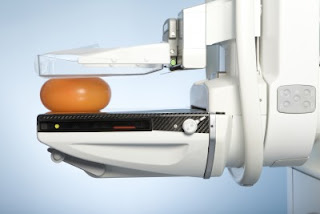Tips From Former Smokers Biography
Source(google.com.pk)The individuals below are participating in the Tips From Former Smokers Campaign. All of them have been affected by cigarette smoke. Some are former smokers and some have never smoked. Almost all of them are living with smoking-related diseases and disabilities. These diseases and disabilities changed the quality of their lives — some dramatically — including how they eat, dress and do daily tasks. Some had to give up activities they once loved to do. They speak from experience and agreed to share their stories with you, to send a single, powerful message: Quit smoking now. Or better yet — don't ever start.
 Meet Annette Meet Annette. Annette, age 57, lives in New York and began smoking in her teens. At age 52, she was diagnosed with lung cancer, which required removal of one of her lungs. She was later diagnosed with oral cancer.
Meet Annette Meet Annette. Annette, age 57, lives in New York and began smoking in her teens. At age 52, she was diagnosed with lung cancer, which required removal of one of her lungs. She was later diagnosed with oral cancer. Meet Beatrice Meet Beatrice. Beatrice, age 40, lives in New York and began smoking regularly at age 13. A mother of two, she quit smoking in 2010 because she wanted to be around for her family.
Meet Beatrice Meet Beatrice. Beatrice, age 40, lives in New York and began smoking regularly at age 13. A mother of two, she quit smoking in 2010 because she wanted to be around for her family. Meet Bill Meet Bill. Bill, age 40, lives in Michigan and has diabetes. At 15, he started smoking cigarettes. At 39, he quit smoking after his leg was amputated due to poor circulation—made worse from smoking.
Meet Bill Meet Bill. Bill, age 40, lives in Michigan and has diabetes. At 15, he started smoking cigarettes. At 39, he quit smoking after his leg was amputated due to poor circulation—made worse from smoking. Meet Brandon Meet Brandon. Brandon, age 31, lives in North Dakota and began smoking at age 15. At 18, he was diagnosed with Buerger's disease, which resulted in the amputation of both his legs and several fingertips.
Meet Brandon Meet Brandon. Brandon, age 31, lives in North Dakota and began smoking at age 15. At 18, he was diagnosed with Buerger's disease, which resulted in the amputation of both his legs and several fingertips. Meet Christine Meet Christine. Christine, age 49, lives in Pennsylvania and began smoking at age 16. At age 44, she was diagnosed with oral cancer, which eventually required doctors to remove half of her jaw.
Meet Christine Meet Christine. Christine, age 49, lives in Pennsylvania and began smoking at age 16. At age 44, she was diagnosed with oral cancer, which eventually required doctors to remove half of her jaw. Meet Ellie Meet Ellie. Ellie, age 57, lives in Florida and never smoked. At 35, she started having asthma attacks triggered from breathing secondhand smoke at work. The severe attacks forced her to leave a job she loved.
Meet Ellie Meet Ellie. Ellie, age 57, lives in Florida and never smoked. At 35, she started having asthma attacks triggered from breathing secondhand smoke at work. The severe attacks forced her to leave a job she loved. Meet Jamason Meet Jamason. Jamason, age 18, lives in Kentucky. He was an infant when he was diagnosed with asthma. When people smoke around him, the secondhand smoke can trigger life-threatening asthma attacks.
Meet Jamason Meet Jamason. Jamason, age 18, lives in Kentucky. He was an infant when he was diagnosed with asthma. When people smoke around him, the secondhand smoke can trigger life-threatening asthma attacks.
Meet James Meet James. James, age 48, lives in New York and began smoking at age 14. He quit smoking in 2010 to reduce his risk for health problems and now bikes 10 miles every day.

Meet Jessica Meet Jessica. Jessica, age 28, lives in New York and has never smoked. Her son, Aden, was diagnosed with asthma at age 3, and exposure to secondhand smoke has triggered asthma attacks.

Meet Mariano Meet Mariano. Mariano, 55, lives in Illinois. He started smoking at 15. In 2004, he had open heart surgery and barely escaped having a heart attack. He quit smoking—grateful for a second chance at life.

Meet Marie Meet Marie. Marie, age 62, lives in New York and began smoking in high school. Diagnosed with Buerger's disease in her forties, Marie has undergone amputations of part of her right foot, her left leg, and several fingertips.
 Meet Michael Meet Michael. Michael, age 57, lives in Alaska and began smoking at age 9. At 44, he was diagnosed with COPD—chronic obstructive pulmonary disease—which makes it harder and harder to breathe and can cause death.
Meet Michael Meet Michael. Michael, age 57, lives in Alaska and began smoking at age 9. At 44, he was diagnosed with COPD—chronic obstructive pulmonary disease—which makes it harder and harder to breathe and can cause death. Meet Nathan Meet Nathan. Nathan, 54, lives in Idaho. A member of the Oglala Sioux tribe, he was exposed to secondhand smoke at work that caused permanent lung damage and triggered asthma attacks so severe he had to leave his job.
Meet Nathan Meet Nathan. Nathan, 54, lives in Idaho. A member of the Oglala Sioux tribe, he was exposed to secondhand smoke at work that caused permanent lung damage and triggered asthma attacks so severe he had to leave his job.
Meet Roosevelt Meet Roosevelt. Roosevelt, age 51, lives in Virginia and began smoking in his teens. At age 45, he had a heart attack. Doctors later placed stents in his heart and performed six bypasses.
 Meet Shane Meet Shane. Shane lives in Wisconsin and began smoking at age 18. At age 34, he was diagnosed with throat cancer and his larynx and upper esophagus were removed. Today, at age 44, he continues to battle cancer.
Meet Shane Meet Shane. Shane lives in Wisconsin and began smoking at age 18. At age 34, he was diagnosed with throat cancer and his larynx and upper esophagus were removed. Today, at age 44, he continues to battle cancer.
Meet Sharon Meet Sharon. Sharon, age 52, lives in Illinois and began smoking at age 13. In 1997, at age 37, she was diagnosed with stage IV throat cancer.

Meet Shawn Meet Shawn. Shawn, age 51, lives in Washington State and began smoking at age 14. At 46, he was diagnosed with throat cancer that required 38 radiation treatments and the removal of his larynx.
 Meet Suzy Meet Suzy. Suzy, age 62, lives in New York and began smoking at age 15. At age 57, Suzy suffered a stroke that caused her to have partial paralysis and problems with her speech and eyes.
Meet Suzy Meet Suzy. Suzy, age 62, lives in New York and began smoking at age 15. At age 57, Suzy suffered a stroke that caused her to have partial paralysis and problems with her speech and eyes. Meet Terrie Meet Terrie. Terrie lived in North Carolina and began smoking in high school. At 40, she was diagnosed with oral and throat cancers and had her larynx removed. She died of a smoking-related cancer on September 16, 2013. She was 53.
Meet Terrie Meet Terrie. Terrie lived in North Carolina and began smoking in high school. At 40, she was diagnosed with oral and throat cancers and had her larynx removed. She died of a smoking-related cancer on September 16, 2013. She was 53.
Meet Tiffany Meet Tiffany. Tiffany, age 35, lives in Louisiana. She started smoking at 19, even though her mother, a smoker, died of lung cancer. Tiffany quit smoking—wanting to be around for her own teenage daughter.

Meet Wilma Meet Wilma. Wilma, age 49, lives in Texas and began smoking in her early teens. She quit smoking in 2007 to reduce her risk for health problems.





.jpg)
